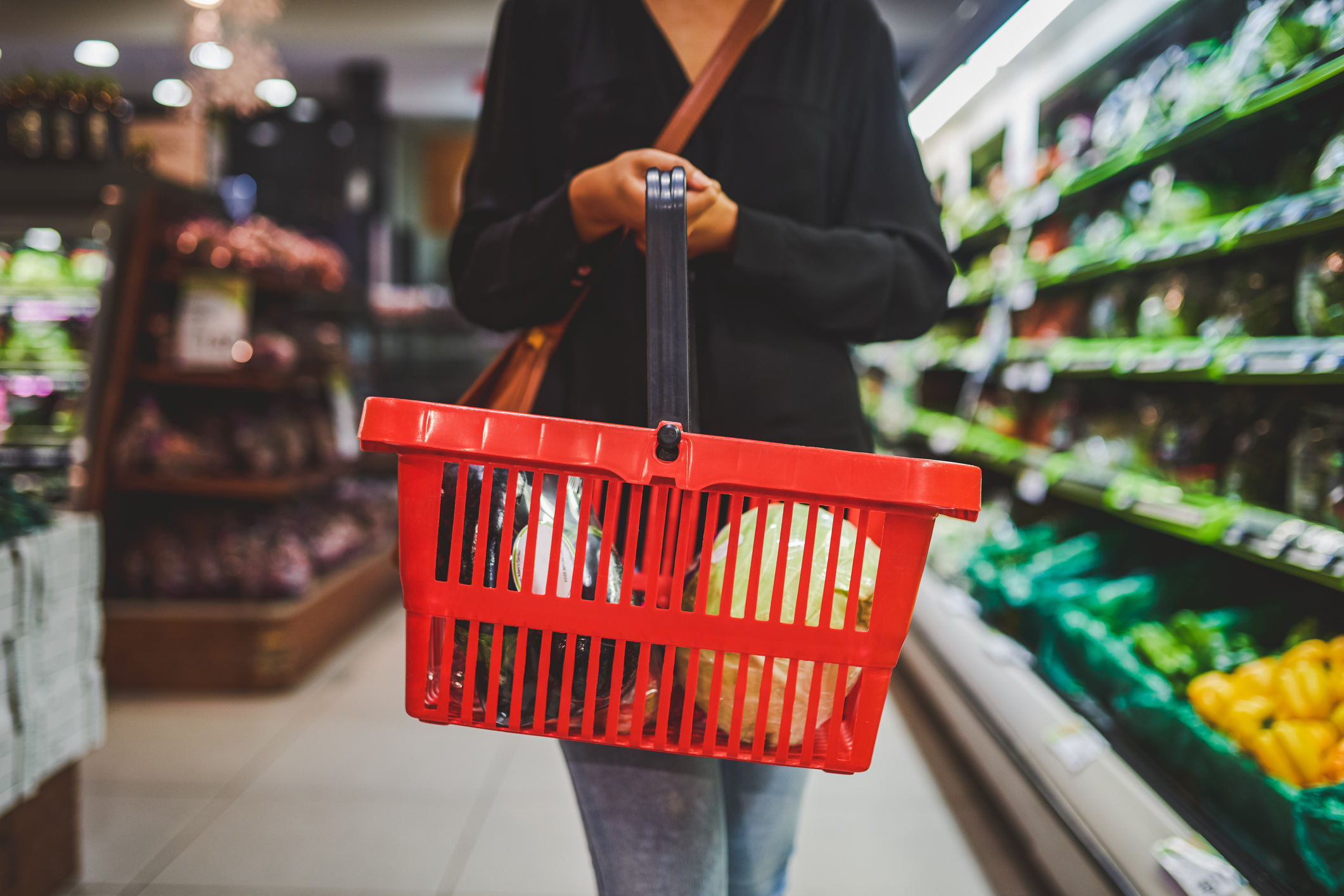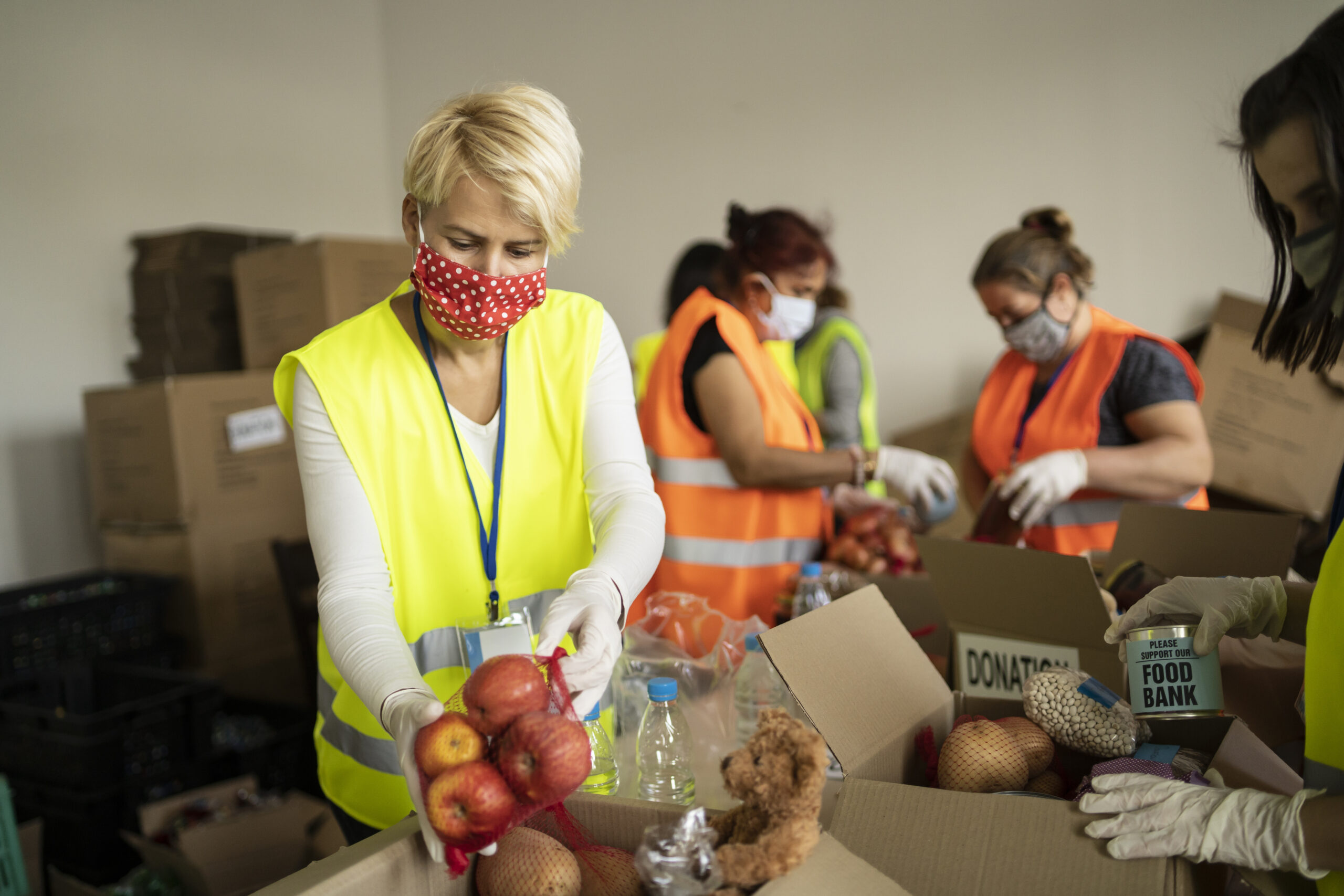

Background
Consistent access to nutritious food is vital for a person’s ability to thrive. New Yorkers who experience food insecurity are twice as likely as their food-secure peers to report unsatisfactory health.[1] During the COVID-19 pandemic, as New Yorkers lost employment and income, many struggled to feed their families. While government emergency programs—such as Supplemental Nutrition Assistance Program (SNAP) Emergency Allotments, expanded free school meals, and expanded Child Tax Credits—increased food access during the pandemic, these programs have now ended. Yet, many economic hardships from COVID-19’s disruptions remain, particularly among populations that have been historically marginalized. New Yorkers in economically precarious positions still face challenges getting healthy, affordable food.
This data brief examines household trends in food insufficiency from May 2020 through October 2023 in New York State. Since the onset of the pandemic, the U.S. Census Household Pulse Survey has tracked the social and economic impact of emergent issues on U.S. households and reported the findings on a near-real-time basis.[2] Conducted biweekly, the survey includes questions related to physical and mental health, Long COVID, and food insufficiency. Food insufficiency is defined as a household sometimes or often not having enough to eat in the previous seven days.[3] This brief highlights differences in food insufficiency between households with and without children, as well as differences by respondent age, income, race, and ethnicity.
Suggested Citation:
Cobbs, E. Ford, MM. McCarthy, J. Barrett, A. Havusha, A. Sandman, D. 2024. “Still Hungry: Food Insufficiency in New York State 2020-2023,” New York Health Foundation, New York, NY.
[1] New York Health Foundation. “NYHealth Survey of Food and Health” August 2022. https://nyhealthfoundation.org/resource/nyhealth-survey-of-food-and-health-2022/, accessed March 2024.
[2] U.S. Census Bureau. “Measuring Household Experiences during the Coronavirus Pandemic.” https://www.census.gov/data/experimental-data-products/household-pulse-survey.html, accessed March 2024.
[3] Food insufficiency is both more severe and shorter-term than the more commonly used measure of food insecurity. Food insecurity is defined as a household being unable to acquire adequate food because they had insufficient money and other resources for food, typically over a 12-month or 30-day period. From United States Department of Agriculture Economic Research Service, “Food Insecurity in the US,” https://www.ers.usda.gov/topics/food-nutrition-assistance/food-security-in-the-u-s/measurement/#:~:text=Food%20insufficiency%20is%20a%20more,than%20to%20overall%20food%20insecurity, accessed March 2024.
Key Findings
- High levels of food insufficiency among New Yorkers have persisted since 2020. In 2023, one in ten (10.0%) New Yorkers reported food insufficiency, an increase over the prior year (9.7%). That translates to nearly 60,000 more New Yorkers estimated to have experienced food insufficiency in 2023 compared with 2022.
- More than one in eight households with children (12.8%) reported food insufficiency in 2023. This rate is 1.5x greater than for households without children (8.5%).
- Racial and ethnic disparities in food insufficiency widened in 2023. Between 2022 and 2023, food insufficiency increased for Black and Hispanic New Yorkers, resulting in the widest disparities seen since 2020. In 2023, rates of food insufficiency among Black and Hispanic New Yorkers were 19.9% and 18.4%, respectively, while rates among white and Asian New Yorkers were 6.7% and 7.8%, respectively.
- About one in three low-income New Yorkers (31.7%) experienced food insufficiency in 2023. Between 2022 and 2023, rates of food insufficiency increased for all income groups except for the highest earners, households with annual income of $100,000 or more.
Policy Implications
Expansion of SNAP allotments, free school meals, and the Child Tax Credit in 2020 and 2021 aimed to alleviate food insufficiency following the onset of the COVID-19 pandemic. Successful implementation of these expanded initiatives may have contributed to the reduction in food insufficiency in 2021. As these initiatives ended, food insufficiency again increased for many New Yorkers in 2022 and 2023. Going forward, policies to make free school meals available for all, to ensure the success of the new Summer Electronic Benefit Transfer Program for Children, and to expand outreach for SNAP benefit programs could help ensure New Yorkers do not go hungry.
Data and Findings
Overall Trends in Food Insufficiency
Food insufficiency remained high in 2023, with one in ten New Yorkers (10%) reporting difficulty accessing food. The 2023 rates were slightly higher than in 2022 (9.7%) and notably higher than in 2021 (8.5%). For many groups, reported food insufficiency rates in 2023 were the highest they have been since 2020, when data started to be collected.
Food Insufficiency by Year
Food Insufficiency in Households with and without Children
Since the onset of the pandemic, food insufficiency has been higher for households with children than for households without children. One in eight households with children (12.8%) reported food insufficiency in 2023. In comparison, one in twelve households without children (8.5%) reported food insufficiency in 2023.
In 2023, both households with children and households without children had food insufficiency rates that were higher than those in the first years of the pandemic.
Food Insufficiency by Race/Ethnicity
Since the onset of the pandemic, racial and ethnic disparities in food insufficiency have widened. Between 2022 and 2023, rates increased for Black (from 17.5% to 19.9%) and Hispanic (from 17.0% to 18.4%) New Yorkers and decreased among white (from 7.1% to 6.7%) and Asian (from 8.2% to 7.8%) New Yorkers. In 2023, Black and Hispanic New Yorkers reported food insufficiency rates 3x higher than white New Yorkers. Food insufficiency rates for Black and Hispanic New Yorkers in 2023 were on par with the rates at the height of the pandemic in 2020.
Food Insufficiency by Age
Since the onset of the pandemic, adults ages 18–64 have reported higher rates of food insufficiency than adults ages 65 and older. In 2023, food insufficiency increased for adults between 35 and 64 years old. One in eight New Yorkers ages 35–64 (12.5%) experienced food insufficiency—the highest level by age group, and the only age group to report an increase in 2023.
Both younger adults (ages 18 to 34) and older adults (ages 65 and older) reported slight decreases in food insufficiency between 2022 and 2023, but rates among older adults still remain higher in 2023 than they were during the first years of the pandemic. In contrast, among younger adults, food insufficiency decreased from 11.8% in 2020 to 7.8% in 2023.
Food Insufficiency by Income
In 2023, rates of food insufficiency were the highest they have been since the onset of the pandemic for all income groups except the highest earners. Food insufficiency rose for the three lowest income groups between 2022 and 2023; only among the highest earners (households with annual income of $100,000 or more) did the rate stay flat. About one in three (31.7%) of the lowest–income New Yorkers (households with annual income of $25,000 or less) reported food insufficiency in 2023, up from 27.7% in 2022. These lowest–income New Yorkers experienced food insufficiency rates 15x higher than the highest–income New Yorkers in 2023 (31.7% vs 1.9%, respectively). Additionally, in 2023, food insufficiency rates among the three lowest–income household groups were higher than in the first three years of the pandemic.
Discussion
Since the onset of the COVID-19 pandemic in early 2020, food insufficiency has remained high in New York State and disparities in food insufficiency have deepened. During the height of the pandemic, numerous federal and State policy actions led to more consistent access to food. Programs such as SNAP Emergency Allotments, free school meals, and expanded Child Tax Credits may have contributed to reductions in food insufficiency in 2021. By 2022, when these programs were rolled back or eliminated, food insufficiency began to rise again. Factors such as high food prices, stubborn inflation, and stagnant wages have likely contributed to persistently high rates of food insufficiency even after the end of the pandemic.
While food insufficiency increased for New Yorkers overall in 2023, some households fared much worse, with many groups reporting the highest rates in 2023 over the past four years.
The differences in hunger for households with and without children point to the importance of food and nutrition supports for families. Current elevated rates of food insufficiency among households with children suggest that families benefitted from pandemic-era programs, like the expanded Child Tax Credits and universal free school meals, to meet household dietary needs. For many, schools are where children get their most nutritious food, and access to these meals is vital to students’ academic success.[4],[5] Investment in and expansion of school food programs are therefore critical to New York’s future.
The widening of racial, ethnic, and socioeconomic disparities in food insufficiency in 2023 also suggests that the end of pandemic-era safety-net programs disproportionally affected historically marginalized groups. Throughout and beyond the pandemic period, Black and Hispanic New Yorkers experienced the highest rates of food insufficiency; rates among both groups climbed steadily between 2021 and 2023. During that same period, food insufficiency rates were both lower and fell for white and Asian New Yorkers. Similarly, food insufficiency rates are now the highest they have been over the four-year period for all income groups except the highest earners, with deepening gaps among income groups. Higher rates of food insufficiency can worsen already inequitable health outcomes and overall wellbeing, further entrenching disparities in population health.
[4] Fox, M.K. ; Gearan, E.; Cabili. C.; et al. (2019). “School Nutrition and Meal Cost Study, Final Report Volume 4: Student Participation, Satisfaction, Plate Waste, and Dietary Intakes,” U.S. Department of Agriculture, Food and Nutrition Service, Office of Policy Support. https://fns-prod.azureedge.us/sites/default/files/resource-files/SNMCS-Volume4.pdf, accessed March 2024.
[5] Hecht, A.E.; Pollack Porter, K.M.; Turner, L. (2020). Impact of the Community Eligibility Provision of the Healthy, Hunger-Free Kids Act on student nutrition, behavior, and academic outcomes: 2011–2019. American Journal of Public Health. 9: 1405-1410. https://ajph.aphapublications.org/doi/full/10.2105/AJPH.2020.305743.
Recommendations
Both federal and State policymakers can take action to reduce food insufficiency. For example, the federal government could reinstate the expanded Child Tax Credit, which research shows reduced child poverty by as much as half during the pandemic.[6] At the State level, New York should pursue the following policy recommendations:
- Enact free healthy school meals for all students. Free and reduced-price lunch programs exclude families with incomes that are higher than the eligibility thresholds, but lower than a living wage. The NYHealth Survey on Food and Health found that 87% of families who participated in the federal free meals program during the 2021–22 school year found the meals helpful.[7] When the federal program ended, New York secured a signature policy win to expand universal free school meals through a State subsidy that encourages schools to participate in the federal Community Eligibility Provision (CEP). But more than 320,000 students are still left behind.[8] New York State should ensure eligible districts are taking advantage of CEP, as well as expand and make permanent free school meals for all New York students.
- Successfully launch the Summer Electronic Benefit Transfer Program for Children (Summer EBT). In 2024, for the first time, a new federal program will provide low-income families with $40 in food benefits for each student for each month school is closed over the summer. To ensure every eligible family participates, New York State needs to identify students, distribute cards to accurate addresses on time, and educate families about the benefit.
- Expand outreach, ensure timely enrollment, and maximize benefits for SNAP and the Special Supplemental Nutrition Program for Women, Infants, and Children (WIC). Nearly half (47%) of New Yorkers eligible for WIC and 13% of New Yorkers eligible for SNAP do not participate.[9] ,[10] For SNAP, processing times are a huge barrier to participation; New York currently ranks 49th of 50 states when it comes to timely processing.[11] Increased participation in these federal programs can reduce food insufficiency without significantly increasing State costs. New York could also follow New Jersey’s lead by increasing the minimum monthly SNAP benefit.
- Ensure adequate funding for emergency food programs. Although SNAP remains the most effective tool to combat hunger, New Yorkers also rely on emergency food programs. Typically, these programs receive funding through the federal Emergency Food Assistance Program (TEFAP) and the New York State Hunger Prevention and Nutrition Assistance Program (HPNAP), as well as local and private funds. Emergency food providers are under enormous strain as they work to meet increased demand following the elimination of enhanced benefits enacted during the pandemic. New York State should ensure these programs have the financial resources they require to meet the needs of hungry New Yorkers.




